Introduction to How to Become a Meditation Instructor
Welcome to your journey to becoming a meditation teacher. In this guide, we will explore the practical steps and the deep commitment required to teach others the art of meditation. and mindfulness. Being a meditation teacher is not merely about mastering the techniques; it’s about embodying the practice and inspiring others to explore their own inner landscapes.
Let’s dive deeper into what it takes to walk this path.
Step 1: Deepen Your Own Practice
The foundational step to becoming a meditation teacher is deepening your own meditation practice.
It’s crucial to have a solid, consistent practice, experiencing firsthand the benefits and challenges of it. Engage in various forms of meditation, such as mindfulness, loving-kindness, or Zen meditation, and commit to a daily routine. This personal depth in practice lends authenticity and credibility to your teaching.
Step 2: Study the Theory Behind Meditation
Understanding the theory behind meditation, including its historical, philosophical, and psychological aspects, is essential. This knowledge will help you contextualize the practice for your students, answering why and how meditation works. Consider enrolling in courses related to meditation, mindfulness, Buddhist philosophy, or modern psychology to enrich your background.
Step 3: Seek a Qualified Mentor
Finding a mentor or teacher who can guide you through becoming a meditation teacher is invaluable.
Some renowned meditation teachers that we have consciously vetted as to their level of consciousness include :
- Thich Nhat Hanh,
- Jon Kabat-Zinn,
- Tara Brach & Jack Korfield,
- Craig Hamilton,
- and Sharon Salzberg, among others.
These figures have written extensively on meditation and mindfulness, and their teachings can often be accessed through books, online courses, and workshops. A mentor can provide personal guidance, feedback on your teaching approach, and insights from their own journey. It’s beneficial to look for someone whose teaching style resonates with you, even if they might not be globally recognized.
Step 4: Gain Teaching Experience
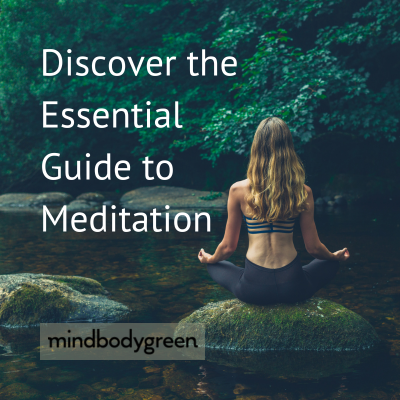 Once you have deepened your practice, understood the theoretical underpinnings, and found a mentor, the next step is to gain teaching experience.
Once you have deepened your practice, understood the theoretical underpinnings, and found a mentor, the next step is to gain teaching experience.
Start small by offering free meditation sessions to friends or community groups. This will help you get comfortable speaking in front of a group and adapting your teaching methods to different individuals.
Feedback from these early sessions will be invaluable as you refine your approach. Volunteering at meditation centers or wellness events can provide further teaching opportunities.
Step 5: Obtain Certification
While not always required, certification from a recognized meditation teacher training program can add credibility to your practice and open up more professional opportunities.
Discover the 5 Keys to Becoming a Mindfulness Meditation Teacher
Is teaching about imparting knowledge or initiating a transformation?
You’ll know the answer when you dive into this enlightening free 5-part Video Series: 5 Keys to Becoming a Mindfulness Meditation Teacher, hosted by the remarkable Jack Kornfield and Tara Brach.
Join these two luminaries in mindfulness meditation to unlock your potential and step into the world of mindful teaching and leadership.
Learn how to become a meditation instructor from the best here.
Definition of a Meditation Teacher
A meditation teacher guides students in practices designed to promote relaxation, build internal energy, and develop compassion, love, patience, generosity, and forgiveness.
Through expertise and personal experience, a meditation teacher imparts wisdom on various meditation practices. and techniques, enabling students to embark on spiritual or mindfulness journeys.
The role of a meditation instructor is not just to instruct but also to inspire and act as a conduit through which the essence of meditation is transmitted. This transmission is not merely academic; it incorporates an experiential dimension that enriches the student’s practice.
Furthermore, a meditation teacher needs to cultivate a deep understanding of the individual paths of their students.
Recognizing that each person’s journey is unique, a teacher must be adept at customizing instructions and guidance to meet diverse needs. This adaptability requires empathy and insight, qualities honed through personal practice and continuous learning.
In the digital age, meditation teachers also have the opportunity to leverage technology to extend their reach. Online platforms can facilitate the sharing of teachings, allowing instructors to connect with a global audience. However, it remains essential for teachers to maintain the integrity and depth of the meditation tradition, even when operating in a virtual space.
It’s also worth noting the growing recognition of meditation’s benefits in various sectors, including healthcare, education, and business.
Importance of Becoming a Certified Meditation Instructor
Certification ensures you have met a standard of education and practice deemed necessary by professional bodies. This recognition aids in trust-building with clients and secures a foundation for your teaching career.. It also signifies a personal and professional commitment to the practice, demonstrating that you have dedicated time and effort to deepen your understanding and abilities in meditation.
In a practical sense, certification can differentiate you from other practitioners who may not have undergone formal training, making it easier for potential students to choose you as their teacher. It provides a level of assurance to students about the quality of instruction they can expect. It assures them that you have the knowledge and skills to guide them effectively.
Furthermore, obtaining certification often involves comprehensive training that covers not just the techniques of meditation but also the philosophical and ethical considerations associated with teaching it. This holistic approach ensures that certified teachers are well-rounded in their understanding of meditation’s impact on both the mind and body, enabling them to address a wide range of student questions and concerns.
Certification programs also typically require aspiring teachers to engage in significant practice themselves, further deepening their personal experience and ensuring they teach from a place of authenticity. This personal journey into meditation enriches the teacher’s life and enhances their ability to connect with and support their students.
On the other hand, engaging in a structured certification program allows for interaction with experienced mentors and a community of fellow practitioners.
Explore Top 10 Meditation Retreats Worldwide
Discover The Best Meditation Holidays to Cultivate & Maintain Your Inner Peace
And if you really want to power up your retreat experience, discover the power of traveling as a spiritual practice here.
Understanding the Role of a Meditation Teacher
As a meditation teacher, your role extends beyond instruction. You become a beacon of peace, an advocate for mental well-being, and a vital part of your students’ growth. journey. In guiding others through their meditation practices, you facilitate transformative experiences that can significantly impact their lives. Your work involves teaching specific techniques and embodying the principles of mindfulness and compassion in your own life. This authenticity in practice encourages students to explore their inner worlds more deeply and fosters a safe environment for personal growth.
Moreover, as a meditation teacher, you play a crucial role in adapting ancient traditions to the modern context, making them accessible and relevant to today’s society. While honoring the roots of these practices, you also have the opportunity to innovate and apply them to contemporary challenges, such as stress, digital distraction, and disconnection from self and others.
In addition to technique instruction, a meditation teacher’s responsibilities include creating a supportive community for practitioners. This aspect of teaching is particularly important in the virtual space, where the sense of connection might be harder to establish. Through thoughtful engagement and creating opportunities for interaction among students, you can foster a sense of belonging and mutual support that amplifies the benefits of meditation.
Ethical considerations are also paramount in this role. As someone who influences individuals’ mental and emotional well-being, it’s vital to approach teaching with integrity, confidentiality, and respect for boundaries.
Responsibilities and Duties of Becoming a Meditation Instructor
Your primary responsibility is to create a safe and supportive environment where students can explore their inner landscapes through meditation.
It involves planning sessions, continuously learning and adapting to your student’s needs, offering personalized guidance, and being a source of encouragement and understanding throughout their journey.
It’s about creating a space where students feel welcomed and valued, their experiences and feelings are acknowledged, and guidance is provided with patience and care.
Furthermore, a meditation instructor must maintain their practice, continuously deepening their understanding and experience of meditation. This commitment not only enhances your capacity to teach but also ensures that you continue to teach from a place of authenticity and personal insight. Your ongoing practice is a cornerstone of your ability to inspire and motivate your students and evolve and adapt your teachings to meet their changing needs.
Additionally, staying informed about the latest research in fields relevant to meditation, such as neuroscience, psychology, and stress management, allows you to enrich your teaching with scientific insights and helps bridge the gap between ancient practices and modern science. This knowledge can empower your students by providing them with a comprehensive understanding of the benefits of meditation and encouraging a more holistic approach to their practice.
Collaboration with other professionals in mental health, wellness, and education can further enhance your effectiveness as a meditation teacher.
Explore Professional Tools for Meditation Instructors from PositivePsychology.com
Impact on Students’ Lives
 Your influence as a teacher can foster significant transformation in your students’ lives, helping them find clarity, reduce stress, enhance overall life satisfaction, and achieve personal growth.
Your influence as a teacher can foster significant transformation in your students’ lives, helping them find clarity, reduce stress, enhance overall life satisfaction, and achieve personal growth.
Your role is about teaching techniques that facilitate a journey of self-discovery and help unlock the potential for profound changes in their approach to life and relationships.
In creating this supportive environment, you are crucial in guiding students through challenges they may face during their practice. Meditation can sometimes surface emotions or thoughts that students find challenging to handle. By providing a non-judgmental space and offering compassionate support, you help them navigate these experiences, learn from them, and integrate their insights into their daily lives.
Another aspect of your impact involves encouraging a sense of community among students. This can be particularly vital in online settings where physical isolation might impede the feeling of connectedness.
By organizing group discussions, virtual retreats, or peer meditation sessions, you help build bridges between individuals, fostering a shared experience that can be hugely supportive. This collective aspect can significantly enhance the individual’s motivation and commitment to their practice and provide a network of support that extends beyond the classroom.
Moreover, as a meditation teacher, you can influence the broader conversation about mental health and well-being.
Steps to Become a Meditation Teacher
Embarking on this path requires dedication to studying meditation techniques, enhancing teaching skills, pursuing formal education, obtaining certification, building a client base and maintaining a personal meditation practice. It is this blend of personal growth and professional development that defines the journey of becoming a skilled and compassionate meditation teacher.
The first step is to deepen your meditation practice. Authenticity as a teacher comes from personal understanding and experience. Regular meditation allows you to navigate your inner landscape, understand the subtleties of the practice, and develop a solid foundation from which to teach others.
Next, pursue formal education and training in meditation. Many programs and courses are available, from local workshops to online classes and intensive meditation retreats. These programs often cover foundational teachings, various meditation techniques, the science of meditation, and how to communicate and teach these practices effectively. Be mindful to choose a program that aligns with your values and the type of meditation you wish to teach.
Obtaining certification from a recognized institution can also be an essential step. Certification validates your skills and knowledge and instills confidence in your students. It demonstrates your commitment to high teaching standards and your dedication to the practice.
Building a client base requires patience and effort. Start by offering free sessions to gain experience and to introduce meditation to a broader audience.
Explore Top 10 Meditation Retreats Worldwide
Discover The Best Meditation Holidays to Cultivate & Maintain Your Inner Peace
And if you really want to power up your retreat experience, discover the power of traveling as a spiritual practice here.
Enhance Teaching Skills
While knowing how to meditate is crucial, teaching it to others effectively is a skill that must be honed through practice and feedback.. Engaging in teaching exercises, such as leading practice sessions with fellow aspiring teachers or offering free classes to gain experience, can be invaluable. Feedback from these sessions will highlight areas for improvement and help refine your ability to convey instructions clearly, adjust your teaching style to meet student needs and manage group dynamics effectively. Additionally, attending workshops or courses on teaching methodologies can further enhance your instructional skills, providing you with various pedagogical tools and techniques for your teaching practice.
Furthermore, staying informed about current research in mindfulness and meditation is beneficial. This not only enhances your own practice but also enriches your teaching by allowing you to incorporate evidence-based insights into your sessions. Understanding the scientific underpinnings of how meditation affects the mind and body can add depth to your instructions, making them more comprehensive and impactful for your students.
Building a supportive community is another crucial aspect. Networking with other meditation teachers, joining professional meditation organizations, or participating in online forums can provide moral support, resource sharing, and opportunities for collaboration. These relationships can also be valuable for receiving mentorship and advice as you navigate the challenges of establishing yourself in the field.
Marketing your meditation teaching practice is essential for reaching potential students. Utilizing digital platforms such as social media or creating your own website can help showcase your services. Writing blogs, sharing testimonials, and offering online classes or webinars are effective ways to engage with a broader audience. However, ensure your marketing strategies resonate with the authenticity and groundedness central to meditation practice.
Lastly, ongoing personal and professional development should never be overlooked. A meditation teacher’s journey is one of continuous learning and growth.
About Craig Hamilton Co-Founder of EvolvingWisdom.com:

 Craig Hamilton is a spiritual trailblazer whose innovative transformation approach brings enlightenment down to earth and unlocks the codes to our highest human potential.
Craig Hamilton is a spiritual trailblazer whose innovative transformation approach brings enlightenment down to earth and unlocks the codes to our highest human potential.
With more than 16,000 graduates to date, his in-depth online meditation classes, workshops, and courses have transformed the lives of seekers in over 85 countries worldwide. These potent transformational how-to meditate training bring together core insights and approaches based on decades of on-the-ground research at the leading edge of spiritual practice and inquiry.
Pursue Formal Education
While not always required, pursuing formal education in meditation, mindfulness, psychology, or a related area can enrich your understanding and credibility as a meditation teacher.
Many institutions offer specialized programs that delve into the theory behind meditation practices, the science of stress and relaxation, and the psychological impact of mindfulness.
This deeper knowledge base allows you to back up your teachings with evidence-based research, making your classes more compelling and informative for your students.
Here are some meditation certification instructors and organizations we’ve vetted for you:
- Sounds True Mindfulness Meditation Teacher Certification with Tara Brach and Jack Kornfield This esteemed two-year teacher training begins in February 2025. Enroll by March 27th, 2024, and save $2,000.
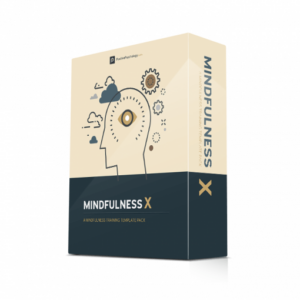 Mindfulness X by Positive Psychology: Mindfulness X© is a comprehensive 8-session mindfulness training package that includes everything you need to offer mindfulness training. It is based on scientific research, comes complete with videos, worksheets, exercises, and slides, and can be taught under your own branding.
Mindfulness X by Positive Psychology: Mindfulness X© is a comprehensive 8-session mindfulness training package that includes everything you need to offer mindfulness training. It is based on scientific research, comes complete with videos, worksheets, exercises, and slides, and can be taught under your own branding.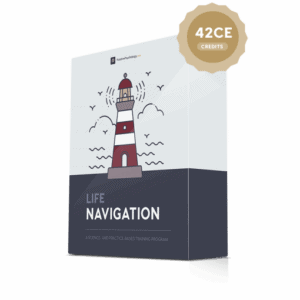 The Life Navigation Box Set by Positive Psychology: If you’re here, you probably know that positive psychology can help your clients create lives worth living. But researching the field and extracting it into meaningful learning and practical applications is difficult and time-consuming, reducing hours you could spend helping clients. Meanwhile, most study programs take years and cost more than the average annual salary. The Life Navigation© Box Set is a positive psychology certification program with the same rigorous standards as any science-based curriculum, designed by a former University professor. Delivered to your doorstep in one stunning box.
The Life Navigation Box Set by Positive Psychology: If you’re here, you probably know that positive psychology can help your clients create lives worth living. But researching the field and extracting it into meaningful learning and practical applications is difficult and time-consuming, reducing hours you could spend helping clients. Meanwhile, most study programs take years and cost more than the average annual salary. The Life Navigation© Box Set is a positive psychology certification program with the same rigorous standards as any science-based curriculum, designed by a former University professor. Delivered to your doorstep in one stunning box.- iNLP Center Mindfulness Certification Training – The Most Effective and Efficient Way to Learn Mindfulness Techniques & Mindfulness Coaching. Start Your Mindfulness Certification Training Today!
Obtain Certification
Completing an accredited program and obtaining certification from a recognized organization like The American Institute of Health Care Professionals will validate your expertise.
Build Clientele and Establish Yourself
Start your practice by offering classes, workshops, or one-on-one sessions and growing your presence in the community both offline and online.
Engaging with the local community through public speaking engagements or offering free introductory meditation sessions can also help build a strong local clientele. Participating in community wellness events or collaborating with other wellness professionals can further expand your reach and establish your reputation as a knowledgeable and reliable meditation teacher.
Additionally, collecting feedback from your students is essential in establishing a successful meditation practice. This feedback provides insights into what aspects of your teaching are most impactful and highlights areas for potential improvement.
Regularly assessing and adjusting your teaching methods based on student feedback ensures that your offerings remain relevant and practical, fostering a loyal student base.
Self-care is another important aspect of building and maintaining a successful meditation teaching practice. A meditation teacher must embody the principles they teach, including practicing self-compassion and mindfulness in one’s own life. Maintaining your meditation practice, ensuring you have time for rest and reflection, and seeking professional development opportunities are all crucial for sustaining your energy and passion for teaching.
Professional development can take many forms, such as attending advanced training workshops, participating in meditation retreats, or engaging in peer supervision with fellow meditation teachers.
Conclusion to Becoming a Meditation Teacher
Becoming a meditation teacher is a fulfilling pursuit that enriches your life and empowers others to find peace and purpose.
With dedication, education, and continuous personal growth, you can establish a meaningful and impactful meditation teaching practice.
Engaging in the meditation community locally and through online platforms can also provide valuable connections and insights. Networking with other meditation teachers and participating in forums or groups dedicated to meditation instruction can offer support, share challenges and solutions, and foster a sense of camaraderie among practitioners.
Furthermore, leveraging digital tools and social media can help expand your reach and connect with a broader audience. By sharing your journey, insights, and the transformative power of meditation through blogs, videos, or podcasts, you can inspire others beyond the confines of traditional teaching settings.
While embracing these strategies, remember to maintain authenticity in your teachings and interactions. Authenticity resonates with people and helps build trust and rapport. Students often seek more than just meditation techniques; they seek guidance, inspiration, and a personal connection to their teacher. Being genuine and open encourages an environment where meaningful learning and growth can occur.
Finally, it is essential to approach your practice with humility and openness to learning. The field of meditation is vast, with many traditions, techniques, and philosophies.
Remaining open to new ideas, student feedback, and the evolving landscape of meditation research can enrich your teaching and personal practice.
Suggested Reading & Resources
FREE Resources:
- Craig Hamilton’s FREE E-book: The 5 Meditation Mistakes We Are All Making
- Craig Hamilton’s FREE Webinar: How to Meditate 2.0: The Meditation Game Change
- Introduction to Insight Meditation: Discover the Path to Sustained Inner Peace with Sharon Salzberg and Joseph Goldstein
- Join Jon Kabbat Zinn in: “Why Mindfulness Matters—and Why It Might Matter to You!”
- Discover the Art of Living Joyfully. Join world-renowned spiritual leaders His Holiness the Dalai Lama and Archbishop Desmond Tutu for a FREE three-part teaching series
- A Mindful and Kind Approach to Quieting Your Mind: Bring Awareness and Self-Compassion to Your Inner Dialog. This free series includes four videos from the much-beloved and deeply regarded teachers of the newly enhanced Power of Awareness course: Devin Berry, Tara Brach, Jack Kornfield, and Konda Mason. Each video will bring you closer to recognizing your trained thought patterns as often counterproductive and teach you how to rise above them.
- Discover a Super Yummy Guided Meditation
- Power of the Mind: A Dangerous Place or a Great Gift? with NY Times Bestselling Author Michael Singer
Suggested Reading:
- Become a Master of Mindfulness
- Unveiling the Transformative Power of Centering Prayer: Book Review of ‘Intimacy with God’”
- Discover Copper Healing Pyramids for Meditation
- Introduction to Insight Meditation (aka Vipassana Meditation)
- Discover Mindfulness Meditation Certification Online
- How to Become a Meditation Teacher
- Do You Struggle with Meditation? What If It Could Be Easier? Interview with Kelly Locke
- 8 Powerful Mindfulness Exercises to Reduce Stress
Retreat-Related Resources:
- Mindfulness Meditation Retreats: How to Choose Your Next Mindful Escape
- How to Choose a Yoga Retreat: Mindful Travel Guidance
- Mindful Travel Guidance: Discover the Benefits of Travel as a Spiritual Practice
- Explore Top 10 International Yoga Retreat Destinations to Nurture Your Inner Yogi


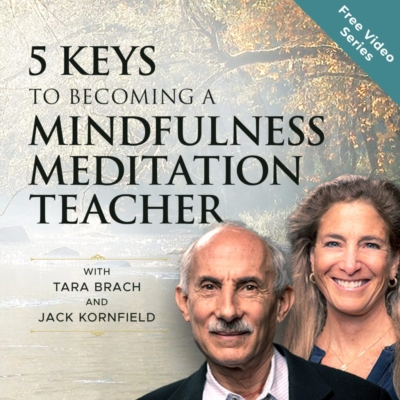

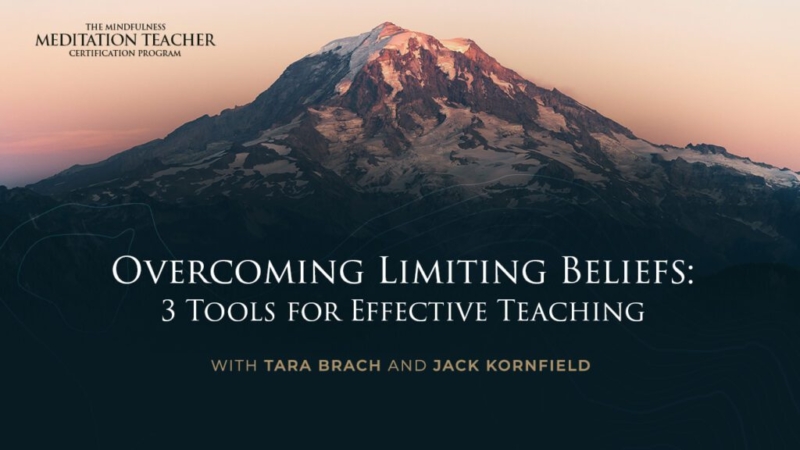




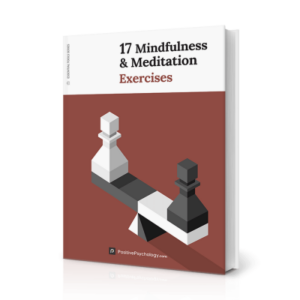
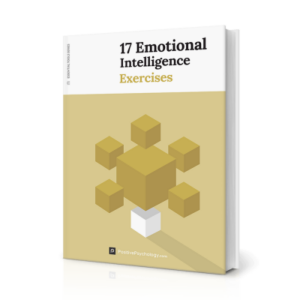
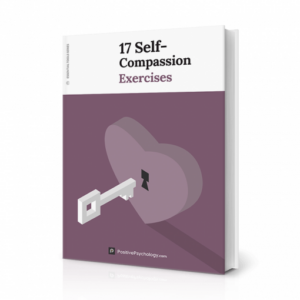
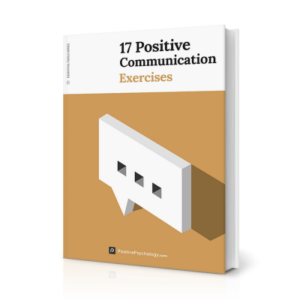









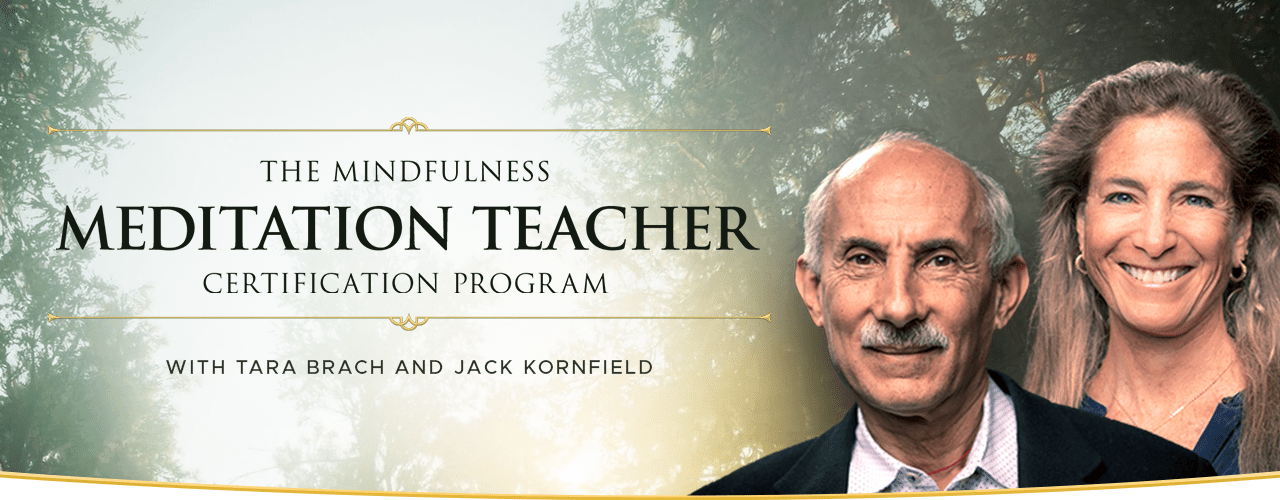
Leave a Reply